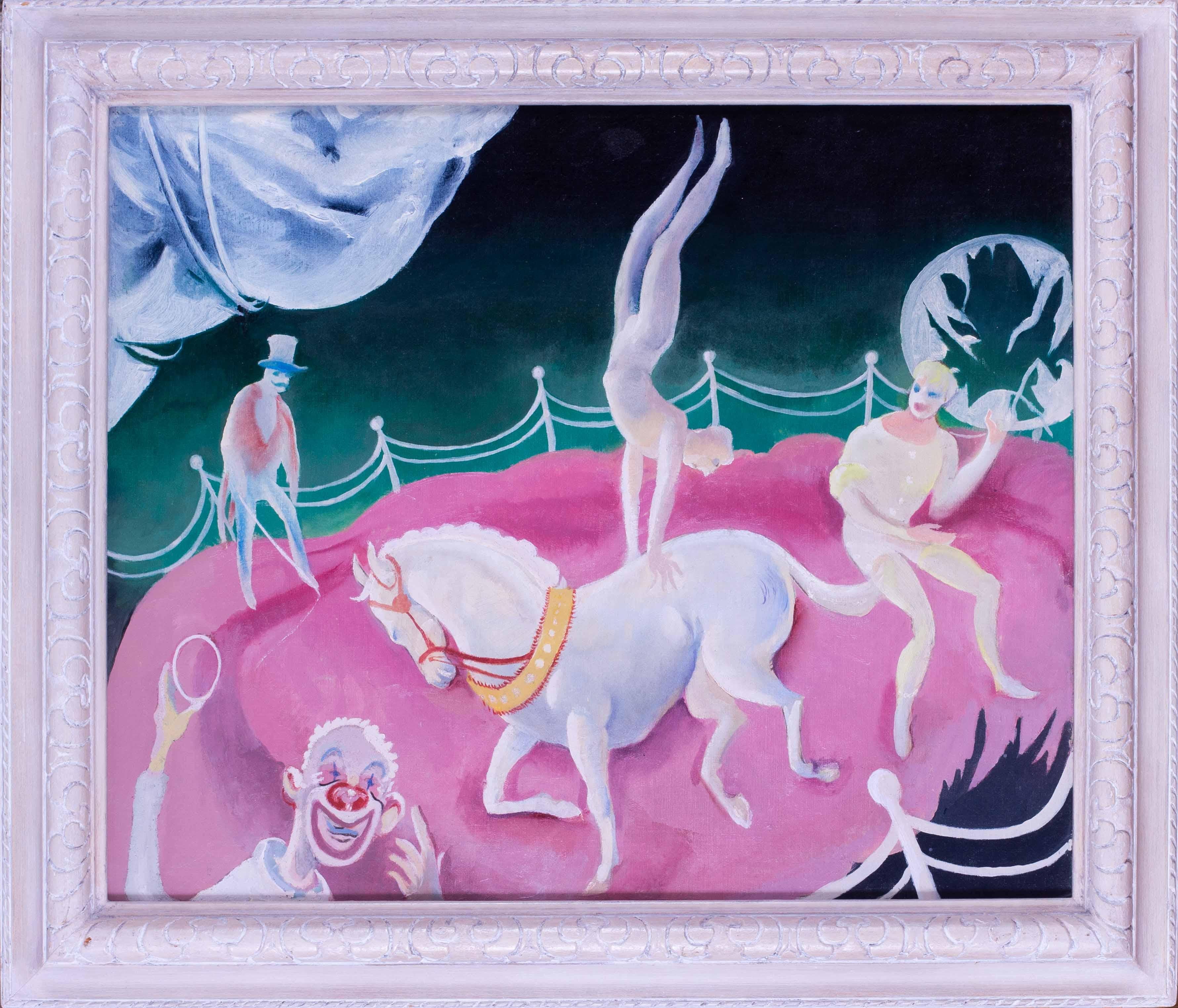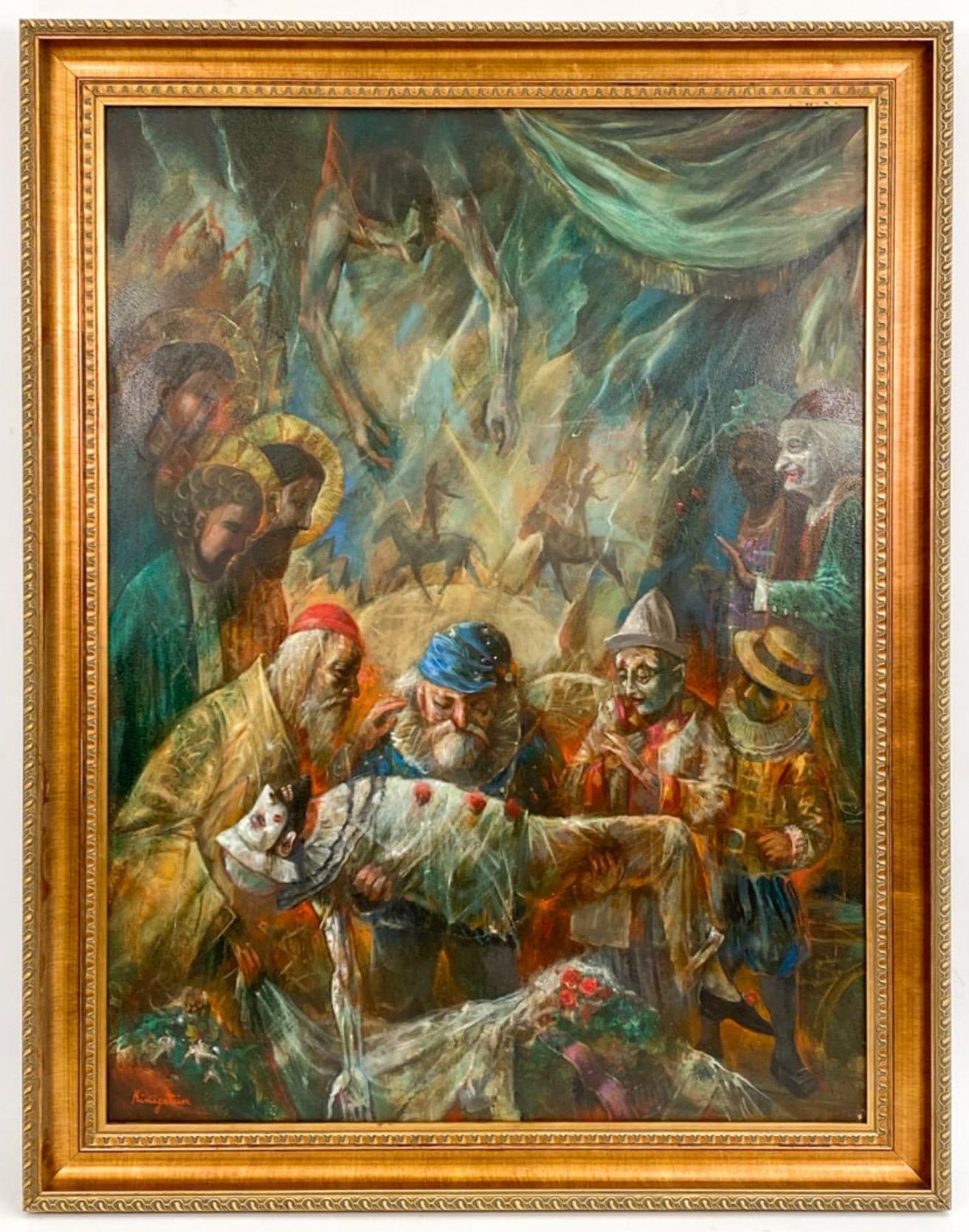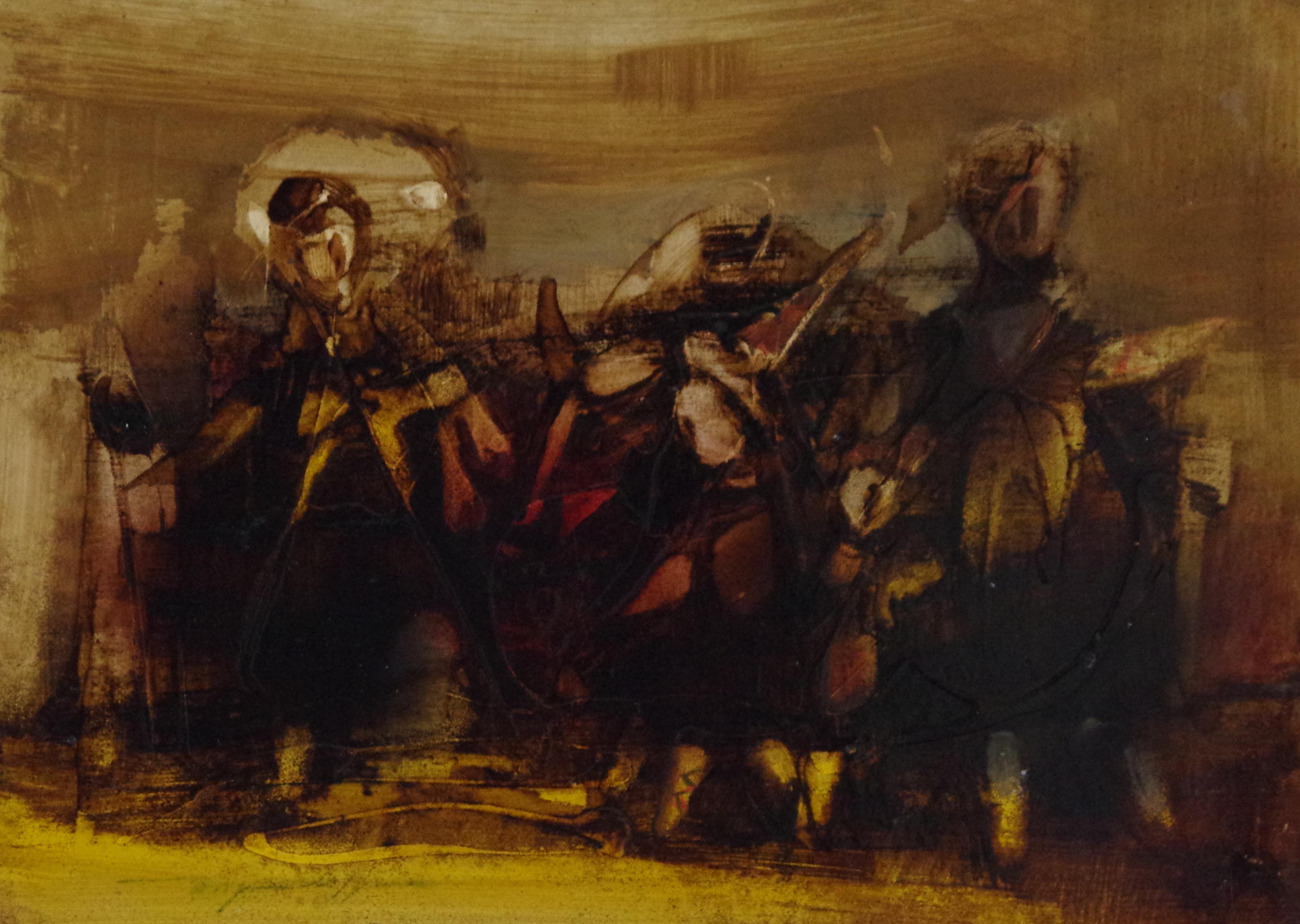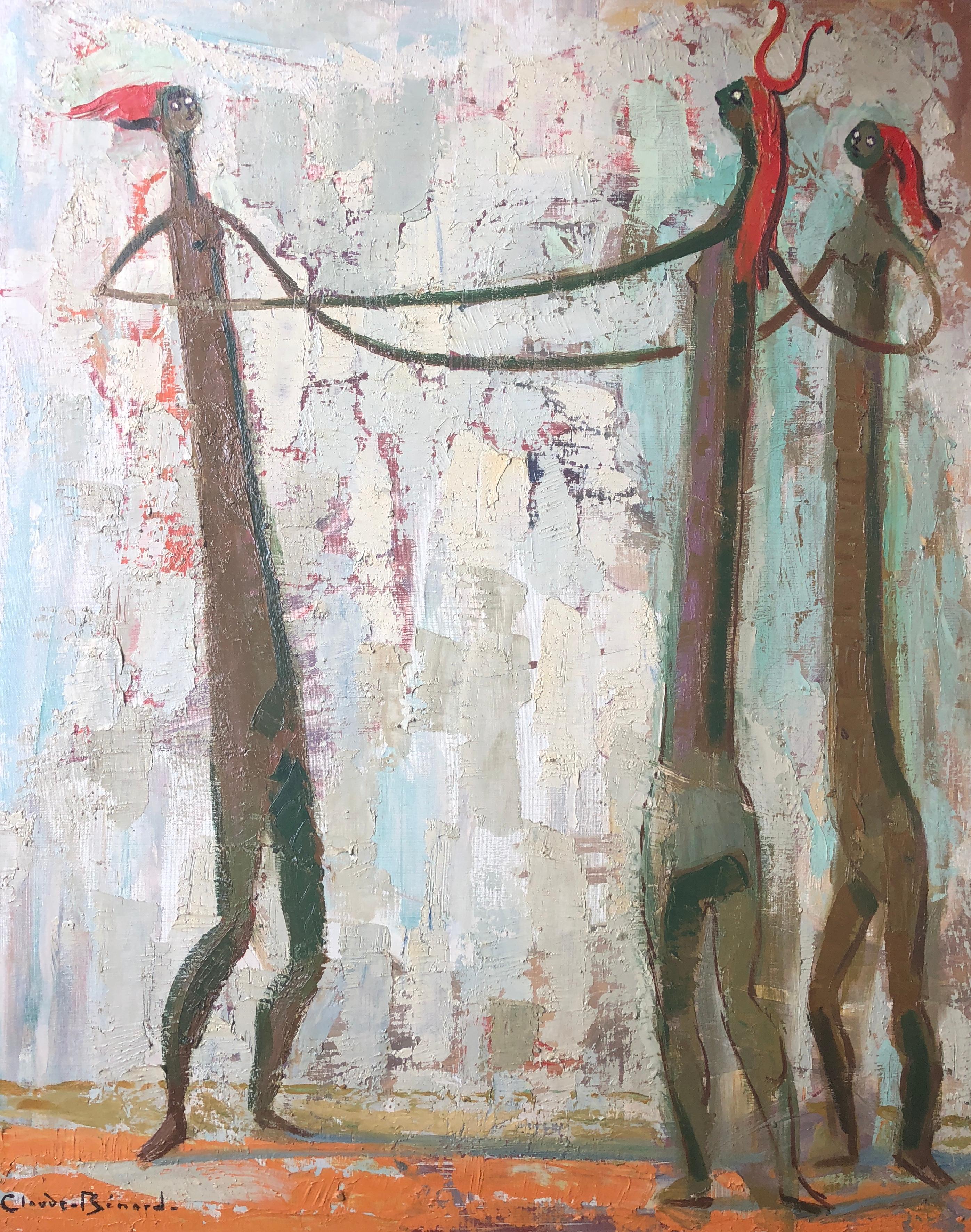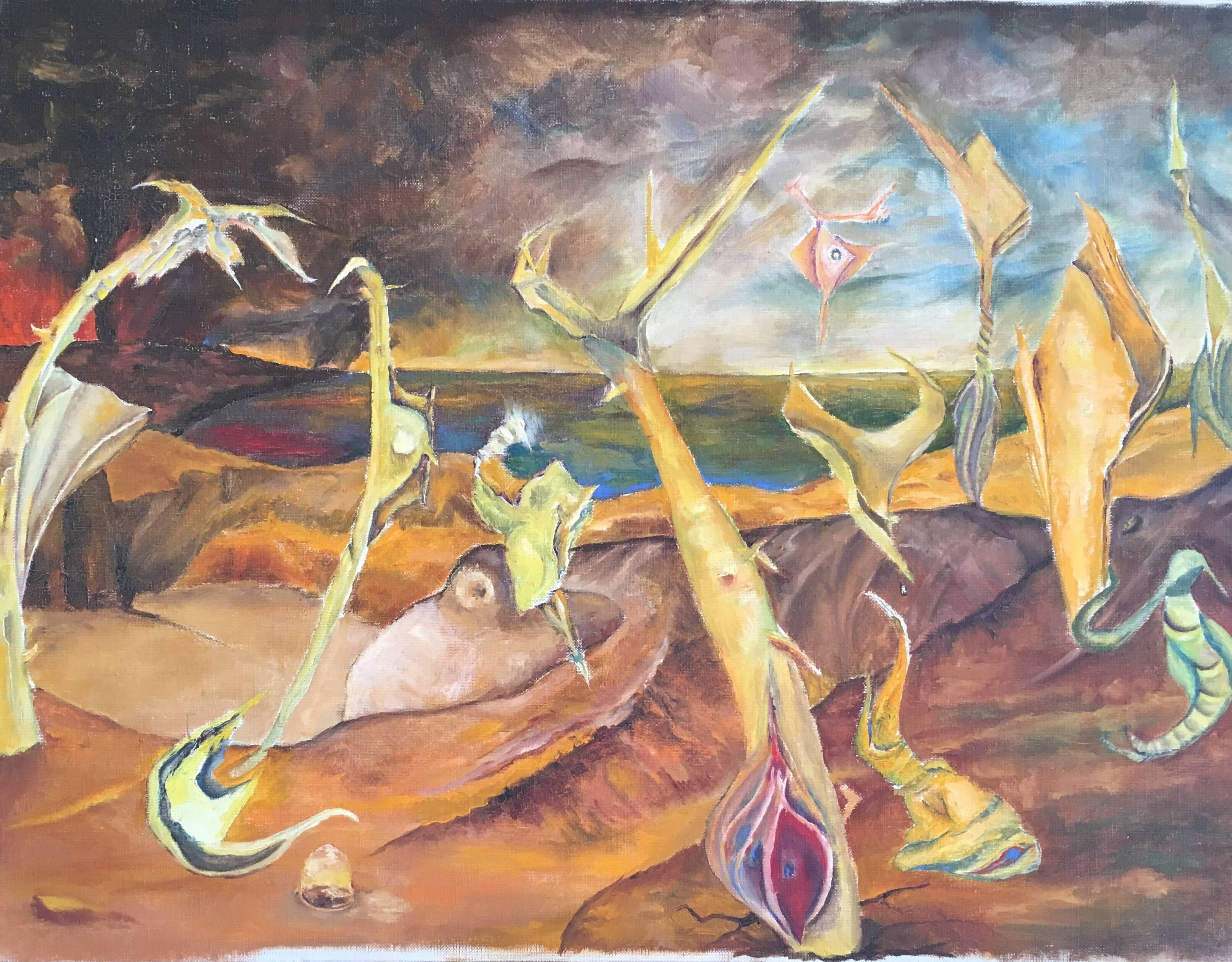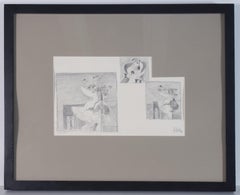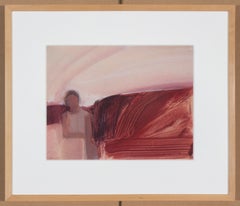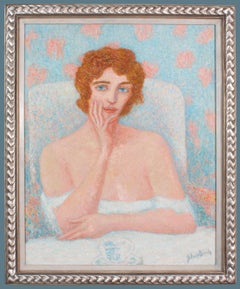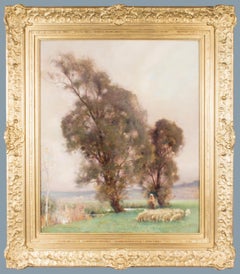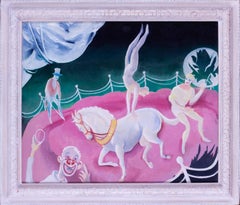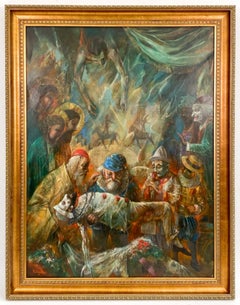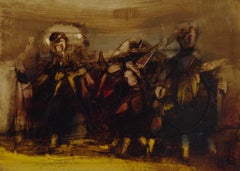Items Similar to French Neo-Romantic Surrealist Painting "Circus" by Kristians Tonny
Want more images or videos?
Request additional images or videos from the seller
1 of 7
Kristians TonnyFrench Neo-Romantic Surrealist Painting "Circus" by Kristians Tonnyc. 1926
c. 1926
$6,500
£4,902.68
€5,662.64
CA$9,106.95
A$10,126.40
CHF 5,301.35
MX$123,695.91
NOK 66,616.75
SEK 62,666.40
DKK 42,271.24
About the Item
Kristians Tonny
(French, born Holland; 1907-1977)
Circus
Oil on prepared board, 16 1/2 x 13 inches
Framed: 22 x 19 inches (approx.)
Inscribed on reverse: (in pencil) "cadre noir/avec filet or..."
PROVENANCE: Carl Van Vechten (1880-1964), New York, an important photographer, writer, and critic, and an influential figure in the American avant-garde (probably purchased in France in 1928); William Jepson, Chestnut Hill, Philadelphia; until 1983
REFERENCE: Eugene R. Gaddis, Magician of the Modern Chick austen and the Transformation of the Arts in America (New York: Alfred A. Knopf, 2000), pp. 131, 150- -53, 189, 255, 284, 318, 323-26, 337.
The painter and illustrator Kristians Tonny was born in Amsterdam but moved to Paris when he was ten years old. At age twelve, he started exhibiting fantastic landscapes, Dances of Death, and visions of the Apocalypse, influenced by such Flemish old masters as Hieronymus Bosch and Pieter Brueghel the Elder. In 1926 the Galerie Drouet in Paris had a group show that included works by Tonny, Eugene Berman, Christian Bérard, and Pavel Tchelitchev, to whom the term Neo-Romantic was later applied to distinguish their works from those of the Cubists, who dominated the European art world at that time. These artists were taken up--at least for a short time--by Gertrude Stein, and, through her Tonny met members of the American avante-garde, who would soon further his career in the United States. Tonny’s work, like that of the other “Neo-Romantics,” retained figurative elements and was often linked with the Surrealist movement that thrived in Europe during the 1920s and 1930s.
- Creator:Kristians Tonny (1907 - 1977, French, Dutch)
- Creation Year:c. 1926
- Dimensions:Height: 22 in (55.88 cm)Width: 19 in (48.26 cm)
- Medium:
- Movement & Style:
- Period:
- Condition:
- Gallery Location:Philadelphia, PA
- Reference Number:Seller: RS 13211stDibs: LU2390214065962
About the Seller
5.0
Recognized Seller
These prestigious sellers are industry leaders and represent the highest echelon for item quality and design.
1stDibs seller since 2023
11 sales on 1stDibs
Typical response time: 3 hours
- ShippingRetrieving quote...Shipping from: Philadelphia, PA
- Return Policy
Authenticity Guarantee
In the unlikely event there’s an issue with an item’s authenticity, contact us within 1 year for a full refund. DetailsMoney-Back Guarantee
If your item is not as described, is damaged in transit, or does not arrive, contact us within 7 days for a full refund. Details24-Hour Cancellation
You have a 24-hour grace period in which to reconsider your purchase, with no questions asked.Vetted Professional Sellers
Our world-class sellers must adhere to strict standards for service and quality, maintaining the integrity of our listings.Price-Match Guarantee
If you find that a seller listed the same item for a lower price elsewhere, we’ll match it.Trusted Global Delivery
Our best-in-class carrier network provides specialized shipping options worldwide, including custom delivery.More From This Seller
View AllThree Cubist Still Life Studies by Philadelphia Artist and Collector Earl Horter
By Earl Horter
Located in Philadelphia, PA
Earl Horter (American, 1883-1940)
Three Still Life Studies
Pencil on paper, 7 1/4 x 13 1/2 inches; Framed: 17 x 21 inches
NOTE: while originally mounted with archival materials, the...
Category
Early 20th Century Cubist Abstract Drawings and Watercolors
Materials
Paper, Pencil
Abstract Figurative Work by Woman Artist and PAFA Alum Elizabeth Osborne
Located in Philadelphia, PA
Elizabeth Osborne (American, b. 1936)
Interior with Figure
Oil on paper, 10 3/4 x 13 3/4 inches; Framed: 18 1/2 x 21 1/2 inches
Signed and dated at lower right: "Osborne 68"
Note attached to backing: (handwritten) "Soc/Happy Spring!/I decided life is too/short and I want you to have this--Liz"; "(over)"; (verso) "This is referring to a/drawing of a figure/oil on paper 1968/given to me in exchange for one of my watercolors S.P."
Provenance: the artist; Socrates and Rhea Perakis, NJ"
Elizabeth Osborne was born in Philadelphia PA. Encouraged by her high school art teacher—the artist Hobson Pittman—to attend the Pennsylvania Academy of the Fine Arts (PAFA), she enrolled there in 1954 in a joint BFA program with the University of Pennsylvania. Only the third woman to have joined the faculty of PAFA in 1963, she was for many years the sole female faculty member. She retired from the Academy faculty in 2011.
Her work is in the collections of the Philadelphia Museum of Art, the Pennsylvania Academy of the Fine Arts, the McNay Art Museum, the Reading Art...
Category
1960s Abstract Expressionist Figurative Paintings
Materials
Oil, Paper
Modernist Portrait of a Woman by Philadelphia Artists Julius Bloch
Located in Philadelphia, PA
Julius Thiengen Bloch
(American, born Germany, 1888-1966)
Portrait of a Woman
Oil on canvas, 32 x 25 1/4 inches
Framed: 38 x 31 inches (approx.)
Signed at lower right: "Julius Bloch"...
Category
Mid-20th Century Modern Portrait Paintings
Materials
Canvas, Oil
French Landscape by Jules Alexis Muenier
Located in Philadelphia, PA
JULES-ALEXIS MUENIER
(French, 1863–1942)
Landscape
Oil on canvas, 25 1/2 x 21 1/4 inches
FRAMED: 34 1/2 x 30 (approx.)
Signed and dated at lower right: “J. A. MUENIER/1908”
Provena...
Category
Early 1900s Realist Landscape Paintings
Materials
Canvas, Oil
Whimsical Illustration of a Couple With a Home Movie Projector by Maurice Freed
By Maurice Freed
Located in Philadelphia, PA
Maurice Freed
(American, 1911 1981)
Home Movies (I), c. 1940
Gouache on board, 13 1/2 x 12 inches
FRAMED: 20 x 19 inches (approx.)
Signed at lower right: “MAURICE FREED”
Maurice F...
Category
Mid-20th Century Other Art Style Figurative Drawings and Watercolors
Materials
Gouache, Board
Peasants in a Landscape: Antique Watercolor on Vellum
Located in Philadelphia, PA
Unknown Artist
(probably French, probably late 18th-early 19th century)
Peasants in a Landscape
Ink, watercolor, and gouache on vellum, 12 5/8 x 19 3/8 inches
FRAMED: 21 x 27 inches...
Category
Late 18th Century French School Landscape Drawings and Watercolors
Materials
Ink, Watercolor, Gouache, Vellum
You May Also Like
Circus performance, oil on canvas by French / hungarian artist Marcel Vertes
By Marcel Vertès
Located in Petworth, West Sussex
Marcel Vertes (French/Hungarian, 1895 – 1961)
‘Circus performance’
Oil on canvas board
Signed `VERTES` (to the reverse)
20 x 24 in. (51 x 61 cm.)
Provenance: With the Hammer Gallerie...
Category
20th Century Modern Figurative Paintings
Materials
Canvas, Oil
Toujours la Vie Recommence
By Edouard Goerg
Located in Saint Amans des cots, FR
Oil on canvas by Edouard Goerg (1893-1969), France, 1958. Life is always the same. Acquired in 2017 from the personal collection of Edouard Goerg. Measurements : with frame : 62.5x53.4 cm - 24.6x21 inches, without frame : 55x46 cm - 21.7x18.1 inches, format 10F. Signed "E.Goerg" (see photo).
Preserved by the painter, then by his family since his death in 1969, this painting appeared in 2017. Entitled "Always life begins again", it is a crepuscular work. Testamentary one could say, so much the statement which is made there is definitive. The fact that he kept it until his death tends to consolidate this vision. Far from the empty looks and death faces of the rebellious era of sarcastic expressionism, the terrifying and compassionate testimony of the Spanish war, and the post-WWII flower women, we are dealing here with a a form of reasonable abdication, but honest. This idea that although everything changes, nothing changes. Changed times, actors, ideas, the same comedy occupies the society. Having given up the idea of changing the latter, Goerg accepts the fact that the only alternative is to stay there or get lost. But stay afloat with his values, completely independent, whatever the cost is.
This work is similar to La Vie Recommence of 1935, reproduced on page 54 of Gaston Diehl's book devoted to the painter (Éditions de Clermont, 1947). On the latter, the artist depicts his vision of life, from birth to death, made of hope, fear, cruelty, resignation and fatality. 23 years later, Toujours La Vie Recommence shows us the road traveled by the painter. It is no longer a matter of denunciation, but ultimately of acceptance of reality and the difficulty of staying there yourself.
The admirer of Hieronymus Bosch gives us an inspired composition. The hand of God, the only expression of physical beauty in this work, comes down from heaven to give life. Symbolically, it holds an egg that dispenses the element from which the human protagonists find their birth, and in which they move and tangle more than they impose. Beautiful allegory of society. Four characters, two women and two men evolve in this societal marigot. The man in the foreground, ruddy face, evolves with ease. His body is supple, flexible, adaptable. The woman on the left observes him with admiration. Obviously, this man is in his place and causes rapture. The right man with massive shoulders and wrapped, shows a physical maladjustment to the activity he is doing. He struggles to stay afloat, his face expresses effort, even exhaustion. But he assumes. He does with what he has, with what he is. The other woman shows him the greatest indifference. What is not the case of the demonic archangel (recurrent in the works of Bosch) with the stunted body, who leads the dance and holds this character, we understand the painter, under his control as to have fun. As this character cannot change bodies, Goerg cannot change values. He does it with. Had he not said to the critic Roger Brielle: "Independents, sensitive and just men, that's what we must strive to stay in this world in disarray". Goerg will have come to narrative expressionism to give us a balance sheet allegory of his deep self and his condition.
Édouard Goerg is one of the major artists of his generation. Coming from a Champagne family, he was born in Sidney, Australia, in 1893, during a professional stay of his father. After passing through London, he arrives in Paris at the age of seven. At twenty, between 1913 and 1914, he studieds painting at the Académie Ranson with Maurice Denis and Paul Sérusier. He travels to Italy and India. Mobilized in 1914, he is sent to Artois, then to Argonne. From 1920, he exhibits at the Salon des Independants, then at the Salon d'Automne where he joins with Laboureur. At Berthe Weil, in 1924, he participates in the exhibitions of the Gromaire group, a prelude to a series of exhibitions in Paris (Berthe Weill, Bernheim Jeune), as in Brussels (Le Centaure). Goerg illustrates books including Table of the beyond by F.Boutet. In 1928, he meets Paul Guillaume who exhibits his works in Boston and the Art Institute of Chicago. He continues to show his works, satires of the bourgeois manners, at Bernheim Jeune, then at Lucie Krogh. In 1934, he travels to Belgium and Holland where he paints surrealist paintings that will be exhibited at Jeanne Castel. In 1935-1936, he meets Aragon, who opened the doors of the houses of the cultures created by the Association of Writers and Revolutionary Artists. The Spanish war and the Second World War mark it deeply. He must protect his daughter and his Jewish women...
Category
1950s Expressionist Figurative Paintings
Materials
Canvas, Oil
Large Oil Painting Circus Scene Clowns Rediscovered NY Artist Jonah Kinigstein
By Jonah Kinigstein
Located in Surfside, FL
Jonah Kinigstein
"Death of a Clown"
Large Oil on Board Painting of macabre circus scene with clowns
Hand signed lower left and signed and titled verso
Frame: 55 X 43 Image: 48 X 36
...
Category
20th Century Expressionist Portrait Paintings
Materials
Oil, Board
Circus, Original Oil Painting, One of a Kind
By Norayr Gevorgyan
Located in Granada Hills, CA
ARTIST: Norayr Gevorgyan
WORK: Original oil Painting, One of a Kind
Medium: Oil on Cardboard, Unique style,
YEAR: 2016
STYLE: Abstract, Figurative
SUBJECT: Circus
SIZE: 12" x 16" x 0...
Category
2010s Abstract Abstract Paintings
Materials
Oil, Board, Cardboard
Ronde, Figurative Surrealist Signed Oil Painting
By Claude Benard
Located in Cirencester, Gloucestershire
Ronde, Signed Oil Painting
By French artist Claude Benard, (1926 - 2016)
Signed by the artist on the lower left hand corner,
titled verso
Oil painting on canvas, unframed
Canvas size...
Category
Mid-20th Century Surrealist Figurative Paintings
Materials
Oil
$2,751 Sale Price
30% Off
Mid 20th century French Surrealist Oil Painting
Located in Cirencester, Gloucestershire
French Surrealist Oil Painting
Mid 20th Century
Oil painting on canvas, unframed
Canvas size: 24 x 18 inches
This intriguing oil definitely ignites some expressive thoughts - one in...
Category
20th Century Surrealist Abstract Paintings
Materials
Oil
$3,471 Sale Price
30% Off
More Ways To Browse
1920s Paris France Paintings
French Circus
Dance Of Death
Abstract In Antique Frame
Old French Board Painting
Circus Oil Painting
1920s French Oil Painting
Noir Painting
Antique Christian Painting
1930s Cubist Painting
Circus Antique
Steiner Paris
Antique Circus Art
Antique Oil Paintings Dancers
Dutch Romantic Paintings
Gertrude Stein
Antique Steins
1930s Circus Art
